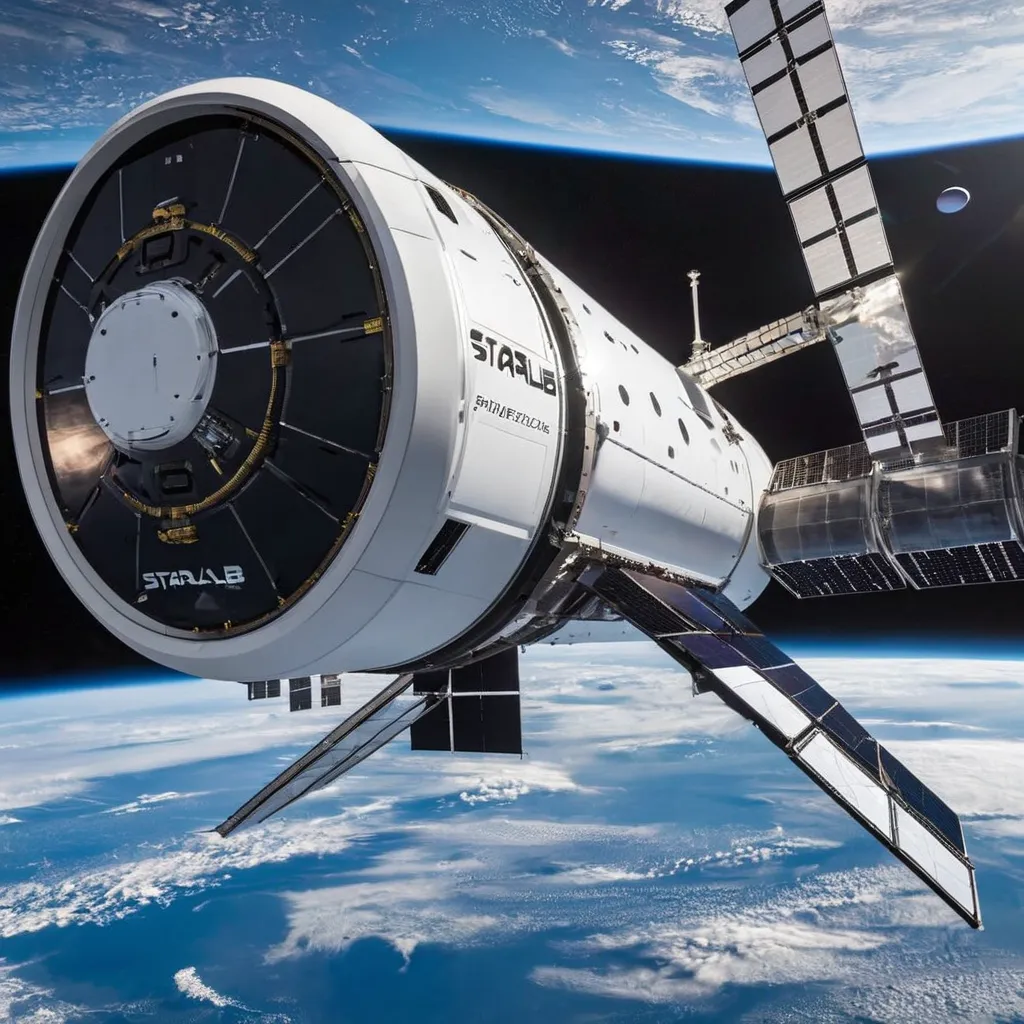Breaking News: Starlab Private Space Station to Soar Aboard SpaceX Starship
In a groundbreaking announcement, Voyager Space and Airbus revealed plans to launch their private space station, Starlab, aboard a SpaceX Starship rocket before the end of the decade. This development marks a significant stride in the realm of private space station initiatives, fueled by substantial funding from NASA's Commercial Low Earth Orbit Development Program. The program aims to bridge the looming "space station gap" anticipated when the International Space Station retires in 2030.

A Strategic Move: Launching Starlab in a Single Mission
The decision to launch Starlab in a single mission comes as no surprise, as Voyager CEO Dylan Taylor emphasized the strategic advantage of minimizing on-orbit risks and reducing costs. The eight-meter-diameter station will find a perfect match in the capabilities of the Starship, currently the only heavy-lift rocket in development capable of accommodating such a sizable payload in one go.
"Launching in one mission eliminates the need for multiple launches and on-orbit assembly," Taylor stated in a recent interview. "This not only streamlines costs but significantly reduces execution risks, aligning with our commitment to efficiency and reliability."
Transatlantic Collaboration: Voyager and Airbus Joint Venture
The collaboration between Voyager and Airbus, formalized through the Starlab joint venture, solidified earlier this month. Leveraging technical expertise from both companies and drawing on their connections with respective government space agencies, the joint venture represents a crucial step towards Starlab's realization. Airbus, headquartered in Germany, will play a pivotal role in manufacturing the Starlab module in-house, including potential future Starlab launches.
While specific details about Airbus's technical contributions remain limited, Taylor emphasized the culmination of the joint venture as overcoming various regulatory hurdles, including a comprehensive review with the Committee on Foreign Investment in the United States (CFIUS), owing to the transatlantic nature of Starlab Space LLC.
Targeting ISS Retirement: Orbital Presence Before 2030
While the launch date wasn't explicitly outlined in the recent announcement, Voyager's earlier projection aimed for a 2028 launch. Taylor emphasized the overarching goal to have Starlab operational in orbit before the ISS retires in 2030. The upcoming year will witness a series of design reviews crucial for progressing towards the Preliminary Design Review (PDR) by the end of this year. The PDR stands as a pivotal milestone, ensuring the project aligns with technical, cost, and timeline requirements.
NASA Funding Boost: $160 Million Contract
In December 2021, Voyager and its subsidiary Nanoracks secured a substantial $160 million contract from nasa for the design and development of Starlab. This funding injection underscores NASA's commitment to fostering private initiatives in space exploration. Notably, other projects led by Blue Origin and Northrop Grumman also received funding, although Northrop later redirected its efforts towards rendezvous and docking technology, collaborating with Starlab for cargo resupply using its Cygnus spacecraft.
As Starlab hurtles towards the next phase of development, it signifies a promising leap forward in the quest for sustained human presence beyond Earth's atmosphere. The collaborative efforts of Voyager, Airbus, and spacex exemplify the collective ambition to shape the future of space exploration. Stay tuned for more updates as Starlab inches closer to its celestial debut.

No comments:
Post a Comment